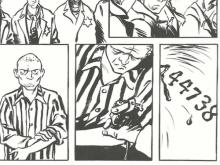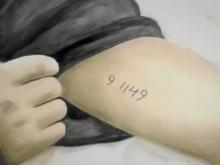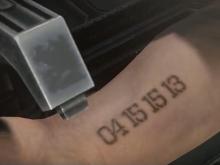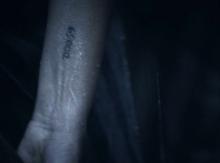The Boxer: The True Story of Holocaust Survivor Harry Haft
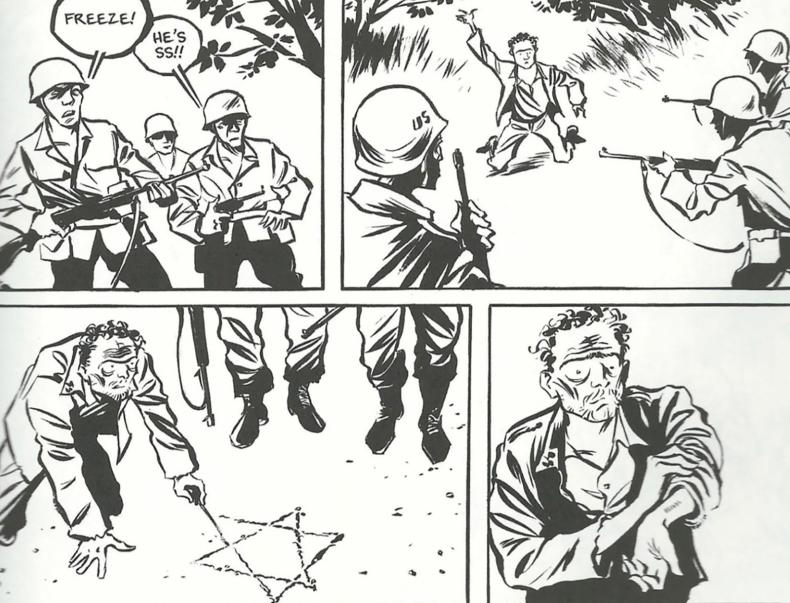
Reinhard Kleist: The Boxer - The True Story of Holocaust Survivor Harry Haft, SelfMadeHero 2014
Reinhard Kleist’s graphic novel The Boxer: The True Story of Holocaust Survivor Harry Haft tells the story of Harry (Hertzko) Haft, who survived Auschwitz after being forced to participate in deadly boxing matches in the camp, performed in front of SS men. This illustration depicts his encounter with American soldiers during liberation after he escapes from a death march. Wearing a stolen SS uniform, the American soldiers mistake Haft for a SS man. Yet, in order to prove he is actually a Jewish survivor of Auschwitz, Haft rolls up his sleeve, reveals his Number Tattoo, and shows it to them. In addition, he draws on the ground a star of David to further indicate his true identity.
The Boxer makes an indirect use of the original footage by creating a mimetic reenactment of the specific gesture presenting the Number Tattoo depicted from the point-of-view of the liberators. By rolling up his sleeve and showing his tattoo to the liberators, Haft’s act is analogous to the gestures of the children rolling up their sleeves, stretching their arms, and showing their tattoos in the historical sequence.
In doing so, the reference identifies Haft as a Holocaust survivor. The tattoo functions as visual evidence of his past experiences and identity, symbolising, together with the star of David, Jewish identity in a post-Holocaust era.
The scene also corresponds to an earlier depiction of the number in the graphic novel’s narrative. While the process of forcibly inscribing the number during the registration process in the camp symbolises humiliation and dehumanisation, the number in the liberation scene becomes an identification mark and a symbol of suffering and survival.
